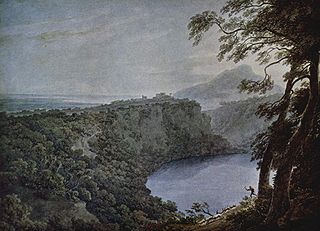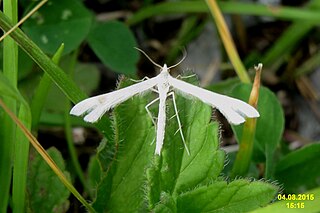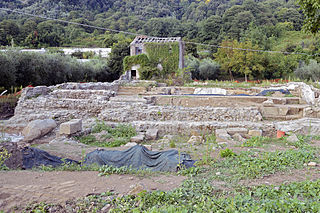
Diana is a goddess in Roman and Hellenistic religion, primarily considered a patroness of the countryside, hunters, crossroads, and the Moon. She is equated with the Greek goddess Artemis, and absorbed much of Artemis' mythology early in Roman history, including a birth on the island of Delos to parents Jupiter and Latona, and a twin brother, Apollo, though she had an independent origin in Italy.

Lake Nemi is a small circular volcanic lake in the Lazio region of Italy 30 km (19 mi) south of Rome, taking its name from Nemi, the largest town in the area, that overlooks it from a height.

The rex Nemorensis was a priest of the goddess Diana at Aricia in Italy, by the shores of Lake Nemi, where she was known as Diana Nemorensis. The priesthood played a major role in the mythography of James George Frazer in The Golden Bough; his interpretation has exerted a lasting influence.

Nemi is a town and comune in the Metropolitan City of Rome, in the Alban Hills overlooking Lake Nemi, a volcanic crater lake. It is 6 kilometres (4 mi) northwest of Velletri and about 30 kilometres (19 mi) southeast of Rome.
Aricini, the ancient inhabitants of Aricia, the form of the name ranking them with the Sidicini, Marrucini, etc., as one of the communities belonging probably to the earlier or Volscian stratum of population on the west side of Italy, who were absorbed by the Sabine or Latin immigrants.

Diana Nemorensis, also known as "Diana of the Wood", was an Italic form of the goddess who became Hellenised during the fourth century BC and conflated with Artemis. Her sanctuary was to be found on the northern shore of Lake Nemi beneath the cliffs of the modern city Nemi. This lake is referred to by poets as speculum Dianae – "Diana's Mirror"; by the town of Aricia which was situated about three miles off, at the foot of the Albanus Mons, the Alban Mount, and separated by a steep descent from the lake, which lies in a small crater-like hollow on the mountainside.
Veigaia is a genus of mites in the family Veigaiidae.
Veigaia agilis is a species of mite in the family Veigaiidae.
Veigaia carpillaris is a species of mite in the family Veigaiidae.
Veigaia cerva is a species of mite in the family Veigaiidae. It is found in Europe.
Veigaia exigua is a species of mite in the family Veigaiidae. It is found in Europe.
Veigaia formosana is a species of mite in the family Veigaiidae.
Veigaia inexpectata is a species of mite in the family Veigaiidae.
Veigaia propinqua is a species of mite in the family Veigaiidae.
Veigaia pseudouncata is a species of mite in the family Veigaiidae.

Platyptilia nemoralis is a moth of the family Pterophoridae. It is found from Europe, through Russia to Japan.
Agonopterix senecionis is a moth of the family Depressariidae. It is found from Germany, the Baltic region and Russia to the Iberian Peninsula, Italy and Romania.

Senecio nemorensis is a species of perennial plant from the family Asteraceae that can reach 2 metres in height. The plant is endemic to Turkey, where it can be found growing at elevation 800–1,800 metres (2,600–5,900 ft).
Nemognatha nemorensis is a species of blister beetle in the family Meloidae. It is found in North America.

The Temple of Diana Nemorensis was an ancient Roman sanctuary erected around 300 BC and dedicated to the goddess Diana. The temple was situated on the northern shore of Lake Nemi beneath the cliffs of the modern city Nemi. It was a famous place of pilgrimage in the Italian peninsula. The temple complex covered an area of 45000 square meters.







